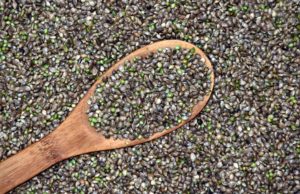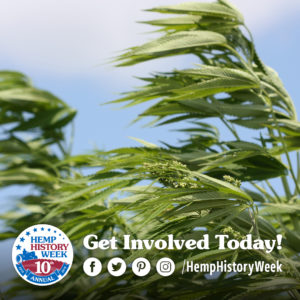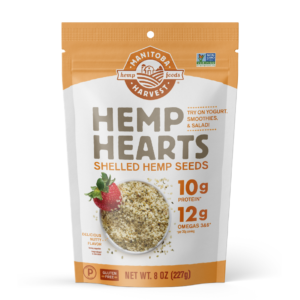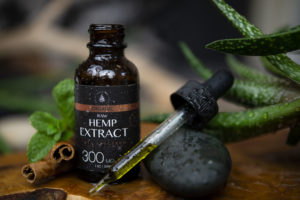Disclosure: in accordance with the FTC guidelines for influencers, as well as my own promise to be honest and up front with readers, I disclose that White Cedar Naturals provided me with a bottle of White Cedar Naturals’ full spectrum hemp oil in exchange for my honest review. White Cedar Naturals had absolutely no control or input on the contents of this review; 100% of the opinions and research are my own.
The market for hemp-derived CBD in the United States was an estimated $591 million in 2018, and the Financial Post predicts it will be worth $22 billion by 2022. As with other innovative markets–organic products, supplements–the majority of companies benefit handsomely from consumer misunderstanding. There is A TON of misinformation out there about CBD. If you have shied away from trying CBD products because (1) “they are drugs!” or (2) it’s just too crazy confusing with all the conflicting advertising, labels, and shifty bloggers, this review is for you.
Warning! At the outset, it is very important for anyone subject to testing for drugs or banned substances–whether that’s because you are a competitive athlete or hold a job with the U.S. federal government–that many brands of CBD, as well as other hemp-derived products, are not subject to third-party testing for THC content. Look for products that are NSF International Certified for Sport or bear the Informed-Sport certification, and use your influence as a consumer to demand more companies participate. Further, as with ANY herb, tea, OTC drug, or grapefruit juice, CBD can interfere with some medications. It is very important that you keep your medical care providers apprised of y our CBD usage (take them the package(s) for the product(s) you use). As a side note, known side-effects of CBD consumption include diarrhea, changes in appetite, and fatigue.
What is CBD and isn’t it just for stoners?
CBD is the abbreviation for the phytocannabinoid named cannabidiol. It is a naturally occurring compound that is part of the cannabis family of plants. Cannabis has three classifications: cannabis indica, cannabis sativa, and cannabis ruderalis. (You can see sketches and read more HERE.) Humans have been selectively breeding cannabis plants for centuries, just like humans used selective breeding to create big ears of corn from plants that originally had just a few kernels per stem. The variety of cannabis bred to maximize the content of tetrahydrocannabinol, or THC (a different phytocannabinoid), is known as marijuana. THC is a psychoactive substance, and consuming it results in a “high.” Marijuana plants also have some naturally occurring CBD in them.
Hemp—often referred to as industrial hemp—is a variety of cannabis sativa. Hemp was one of the first plants to be spun into fibers, and historically hemp has been used in paper, textiles, rope, and clothing. Hemp has much lower concentrations of THC than marijuana—you don’t get “high” from smoking hemp because the THC concentration is 0.3% or less (marijuana has a THC concentration of 15% to 40% depending on the strain)—and much higher concentrations of cannabidiol, or CBD. Hemp is a very versatile plant. In addition to spinning the fibers, you can eat the hemp seeds. (I’m a huge fan of Manitoba Harvest in case anyone asks. Hemp seeds are an excellent source of nutritional fiber, protein, and healthy fat and they are delicious on salads and yogurt parfaits. Bonus: no known allergans. Tilray just acquired Manitoba Harvest for $419 million, proving the hemp market is a cash cow.) Hemp seeds are also used for animal feed and bird seed. Parts of the plant can be used for biofuel. Hemp oil from the seeds is used in oil-based paints, as a moisturizer for creams, and for cooking.

CBD is NON-psychoactive. It is also NOT addictive. The Wikipedia entry has all the nerdy good stuff on it, from the chemical structure to the currently known pharmacology. Running Shoes Guru has already outlined the preliminary benefits and linked to the research.
Can CBD really do so many things? Is it a scam?
You’ve probably read at least one article claiming that CBD is The Answer for anxiety, depression, insomnia, muscle pain, acne, and more. (If not, seriously, go look at the Running Shoes Guru article already.) If you’re like me, the claim that one compound can help with such a wide variety of conditions makes your inner skeptic start asking questions, like “How can that be?” The answer, as of 2019, is that the mechanism by which CBD operates in the body is not (yet) well understood.
 CBD is one of hundreds of plant compounds called phytocannabinoids (“phyto” for plant-based). The human body also produces cannabinoid compounds. These are called endocannabinoids (“endo” is short for “endogenous” which means “having an internal cause or origin”). The human body has a regulatory system called the endocannabinoid system (ECS for short), which I did not learn about in my high school or college biology classes for the simple reason that it hadn’t been discovered yet! The ECS is made up of receptors found in the nervous system throughout the body, endocannabinoids produced by the body, and enzymes that break down cannabinoids. This system helps to maintain balance within the body in many ways. Among other things, the endocannabinoid system has an effect on motor learning and memory, appetite, the stress response, and pain sensation. There is some evidence that CBD has an effect on certain types of cancer cells (when pure CBD is applied directly to the cells) and epilepsy.
CBD is one of hundreds of plant compounds called phytocannabinoids (“phyto” for plant-based). The human body also produces cannabinoid compounds. These are called endocannabinoids (“endo” is short for “endogenous” which means “having an internal cause or origin”). The human body has a regulatory system called the endocannabinoid system (ECS for short), which I did not learn about in my high school or college biology classes for the simple reason that it hadn’t been discovered yet! The ECS is made up of receptors found in the nervous system throughout the body, endocannabinoids produced by the body, and enzymes that break down cannabinoids. This system helps to maintain balance within the body in many ways. Among other things, the endocannabinoid system has an effect on motor learning and memory, appetite, the stress response, and pain sensation. There is some evidence that CBD has an effect on certain types of cancer cells (when pure CBD is applied directly to the cells) and epilepsy.
CBD can hook up with some of the types of receptors in the endocannabinoid system. Depending on what it interacts with and how, CBD can have a variety of effects in the body. This article has a chart (scroll down to Figure 2) that explains what CBD does and how it does it. Some scientists hypothesize that endocannabinoid deficiency is the root cause of multiple diseases, including fibromyalgia. Despite the blooming market for CBD products, we still don’t fully understand how the human endocannabinoid system works.
It is Legal? Yes, but also Maybe No.
When Congress passed the 2018 Farm Bill, which included a provision making industrial hemp legal, the entire CBD industry let out a cheer: hemp-derived CBD is legal! Unfortunately, that’s not exactly true. It might seem odd if you work outside the world of highly-regulated industries (wait, hemp is legal but a component of hemp is not?). If you are sincerely interested in the nitty-gritty, I highly recommend you follow the status reports issued by the American Herbal Products Association. Without getting too far into the weeds, here are the highlights following the 2018 Farm Bill:
- The U.S. Drug Enforcement Administration (DEA) does not have authority over hemp, cultivation of hemp, or hemp products (which includes plants, plant parts, and plant derivatives). This is because the 2018 Farm Bill removed hemp from the “controlled substances” list (and that’s what the DEA controls).
- Each state has the opportunity to assert primary regulatory authority over hemp. (Remember how the federal government only gets the powers enumerated in the Constitution, and the rest are reserved to the States? This is a little bit like that.) To take primary control, each state has to submit a “hemp plan” to the U.S. Department of Agriculture (USDA). If a state does not submit a “hemp plan,” that state’s hemp is regulated by USDA.
- Hemp is no longer a controlled substance under federal law, which means hemp ingredients MAY be used in food, dietary supplements, cosmetics, and personal care products sold across state lines…but not necessarily right now. (See below.) You still can’t sell marijuana across state lines, and that includes CBD derived from marijuana. (I’m just the messenger–don’t tell me that makes no sense.)
- Hemp ingredients are subject to the same regulations as other herbal ingredients. Those regulations include rules about production facilities, labels, “serious adverse effect” reports, and more.
- The U.S. Food and Drug Administration (FDA) has taken the position that CBD cannot be added to foods sold over state lines, and that CBD can’t be a dietary supplement. Sound wrong, since hemp is legal now? It’s because the Food, Drug, and Cosmetic Act (FDCA) has a rule that any article being investigated or approved as a drug is forbidden from being marketed as a supplement or added to any food, and there are several CBD-based drugs under investigation with the FDA by a company called GW Pharmaceuticals plc. (In Jun 2018 the FDA approved the first CBD medication, Epidiolex, for the treatment of seizures associated with rare/severe forms of epilepsy called Dravet syndrome and Lennox-Gastaut syndrome.)
- Ironic, right? The fact that there is evidence CBD has health benefits means it can’t be used in OTC health products yet? Slow your roll. The FDA is trying to find a way to both permit CBD in food and supplements, while preserving the financial incentives for companies to study potential pharmaceutical use. The most likely solution is to put a limit on the concentration or dosage of CBD in non-pharmaceuticals.
- The FDA does have the power to use its rule-making authority to allow CBD use in food and supplements, it has to actually act to make that happen. Right now, don’t hold your breath…though some legislators have noted that the FDA really ought to do something, given that CBD products are readily available despite the lack of rules.
- AHPA noted “Immediately following the signing of the 2018 Farm Bill, the FDA Commissioner issued a statement noting that the legislation preserves FDA’s current authority to regulate products containing cannabis or cannabis-derived compounds, and indicated that such ingredients–including hemp and hemp derivatives, such as CBD–will be treated as the agency treats any other FDA-regulated products.”
FDA Commissioner Gottlieb resigned a few months after the 2018 Farm Bill passed. As a result, a great deal remains up in the air. There is a significant possibility the new commissioner may have completely different priorities, and ignore Commissions Gottlieb’s stated intent to reform DSHEA (the act regulating supplements) and act on the hemp provisions of the 2018 Farm Bill.

Further, the nebulous state of the law on CBD products means there is no uniform labeling language used on all products. The hazy state of the law has led some companies to label their products as “hemp extract” instead of “CBD.” This has the benefit, potentially, of not being regulated as a “CBD” product (definitely a benefit in states where CBD is state-regulated and illegal) but the downside of not clearly stating the component parts (e.g. how much CBD, how much other phytocannabinoids, how much plant terpenes?), as well as making it difficult to compare products across brands.
If you’re interested in hemp, you might want to keep an eye on the various hemp industry groups’ websites, or join their mailing lists. In addition to the AHPA, there is also the U.S. Hemp Roundtable, which is championing the U.S. Hemp Authority Certification; the Hemp Industries Association; and for basic education, keep on eye on the annual Hemp History Week.
By the way, if you’re not in the United States? The law is probably more clear. CBD is legal in the UK, Europe, Canada, and Japan
Limits on Self-Experimentation.
Before I launch into my review of White Cedar Naturals and my experience with the product, I think it is important to acknowledge that self-experimentation has limits. The placebo effect–basically the idea that your brain can convince your body that a fake treatment is real–exists and is recognized by all serious medical authorities, including Harvard Medical School. This is why “double blind” studies–whee neither the participant nor the researcher know which study participants receive the investigational medicine and which receive a placebo–are the gold standard for peer-reviewed research. In taking a product for a test-drive, there is no way to conduct such a study, and no way to separate my potential expectations from my experiences.
In general, prior to trying any hemp-derived product I was cautious. I read as much as I could find in both general advertising from CBD companies, as well as the published peer-reviewed research on PubMed. Because many compounds remain active in the body long after they are taken–that’s part of how many anti-depressants work, which is why they have an “on ramp” and “off ramp” dosage for starting and stopping–I conducted my first experiments on the weekend, and made sure I did not have to operate heavy machinery or drive. (Just about every medication I have taken says not to drive or operate heavy machinery until you know how it affects you, so that just seemed like a smart thing to do.)

Introducing White Cedar Naturals
When I was first approached by White Cedar Naturals they had a website, but the only way to purchase products was via their Amazon store. I read every word on the website, as well as the studies linked in support of product claims. While I wasn’t particularly impressed with the initial website–remember, I’m both a skeptic and the daughter of an English teacher–I provided detailed, extensive feedback to the representative who reached out to me. That feedback ranged from “you’re missing a comma here” to “the summary of that study is misleading, because it implies that it applies to taking hemp extract orally but the study was conducted by putting CBD directly onto tumor cells.” I was extremely impressed when 100% of my feedback was incorporated into the updated (much prettier!) website. The updated website has much clearer, more accurate language (in my opinion).
I liked that the hemp plants used by White Cedar Naturals are sourced from specific farms in Kentucky, from a specific breed of plant (“Cherry”). While I have no facts regarding how this affects quality or efficacy, to me it shows that the company cares about the source ingredients (as opposed to buying whatever is cheapest on the market). Like the majority of companies, White Cedar Naturals does not disclose who does its third-party testing but it does state that all products are tested. (Third-party testing is testing done outside of the company by an independent lab.)
I also liked the idea that the White Cedar Naturals oils are made from both cold-pressed raw hemp extract (from the entire plant) and cold-pressed hemp seed oil. While I have found absolutely no scientific support for this, in my mind I compare it to apples: drinking apple juice does not give a body the same nutrition as eating the whole apple, or eating applesauce; juice has none of the fiber, and may be missing other unstudied plant components.
Finally, I really like that the White Cedar Naturals website has a solid FAQ aimed at the non-expert consumer. You can check that out here.
Sharing is caring--click to alert your tweeps!Click To TweetMy Personal Experimentation and Opinion
This is MY experience. I am not a doctor or a medical professional. I cannot predict how your body will react, nor do I attempt to do so.
Prior to trying White Cedar Naturals full spectrum hemp extract (the 300mg product) I had tried only one other CBD oil. Frankly, it tasted like the smell of old gym socks and I gulped that product down while trying to avoid it touching my tongue. The package of the White Cedar Naturals oil described it as “cinnamint” flavor, and directed me to hold the oil under my tongue before swallowing. (Sublingual–under the tongue–absorption is recommended for a variety of products, including the vitamin B12 supplement I take. The idea is that some component of the product dissolves or is warmed or otherwise made available to absorption into the bloodstream via the tissues under your tongue. If you look under your tongue, you can see the network of blood vessels there.) Much to my surprise, the cinnamint flavor is quite pleasant. A little mint, a little cinnamon. Not too pungent. Not too tingly. Most important: no old gym socks flavor.
The first Friday night I tried White Cedar Naturals, I tried two droppers-full. I wasn’t feeling particularly agitated or sleepless, but was hoping the hemp extract would allow me to fall asleep (and more important: STAY asleep!) and have a solid sleep that night. I did. I can’t be sure that was due solely to the hemp extract (you can’t conduct a double-blind study on yourself), but honestly for that kind of sleep I don’t care if it was a placebo!
I also conducted the next several trials on weekend nights. (Just in case. Always better to be cautious.) In my experience, one dropper post-workout helped my muscles relax a wee bit more post-workout during the warm shower. In my experience, two droppers is about right for an average night for sleeping soundly. I did try three droppers on a few nights when I was feeling agitated, overstimulated, or too “wide awake” to sleep, and that seemed to work fine. Each time when I awoke the next morning I felt well-rested, had no memory of disrupted sleep, and did not feel groggy or have any of the slowness that I associate with sleep-aid medications. I felt absolutely zero effects that I would describe as a “high.” Instead I felt just a little more relaxed, and slept quite well.
If you are looking for a solid hemp extract product from a company that cares about the quality of its products, White Cedar Naturals is worth your attention and is a solid candidate for your first hemp-derived product. White Cedar Naturals has a 90-day 100% satisfaction guarantee, and (based solely on my own experience) is very responsive to questions. (To me, that’s a virtue. If you can’t be bothered to give me satisfactory answers to my genuine questions, you don’t deserve my money or my patronage.) I’m excited to try their chocolates!
For more sane resources on CBD and hemp:
- https://www.projectcbd.org/
- https://en.wikipedia.org/wiki/Hemp
- https://medium.com/cbd-origin/hemp-vs-marijuana-the-difference-explained-a837c51aa8f7
I also highly recommend searching PubMed (which comprises more than 29 million citations for biomedical literature from MEDLINE, life science journals, and online books) for published, peer-reviewed studies on CBD and hemp extract, especially if you are trying to evaluate the evidence to support a product’s claim that “CBD can help with condition X.”